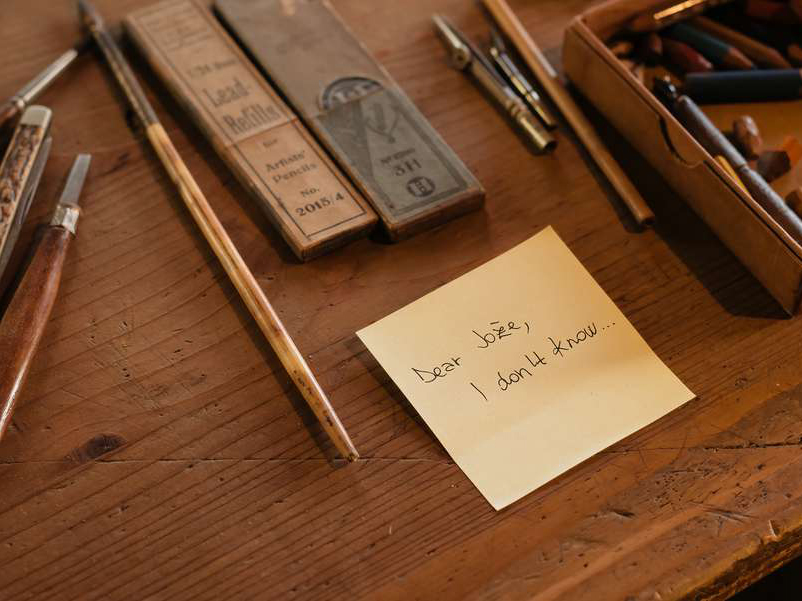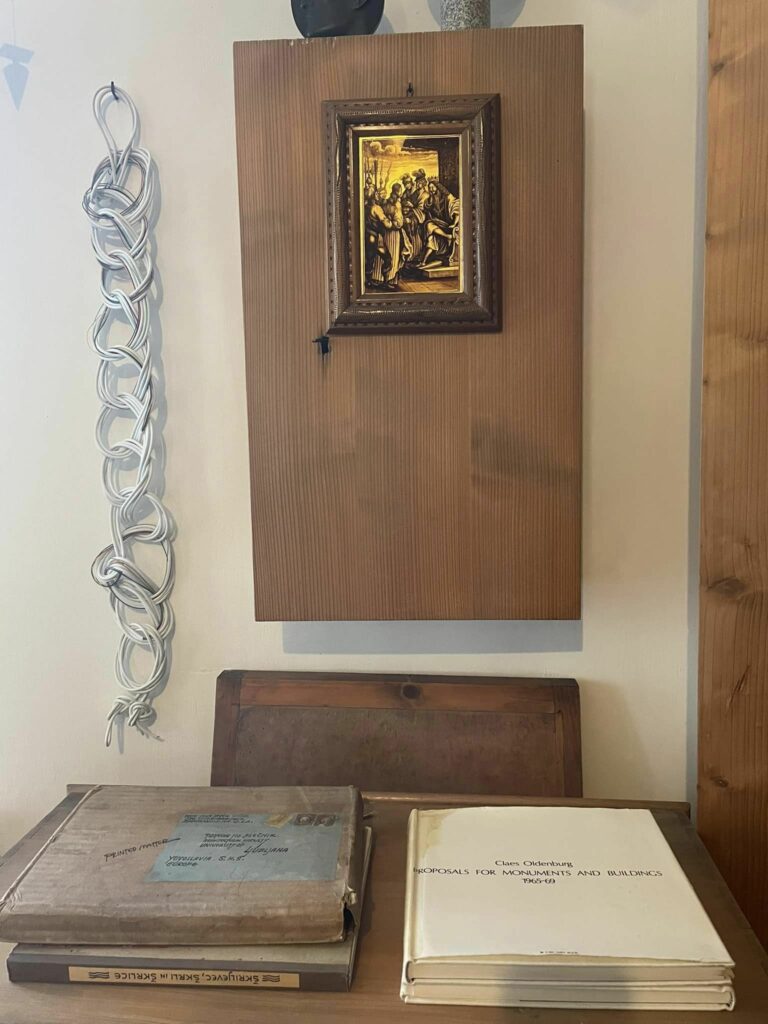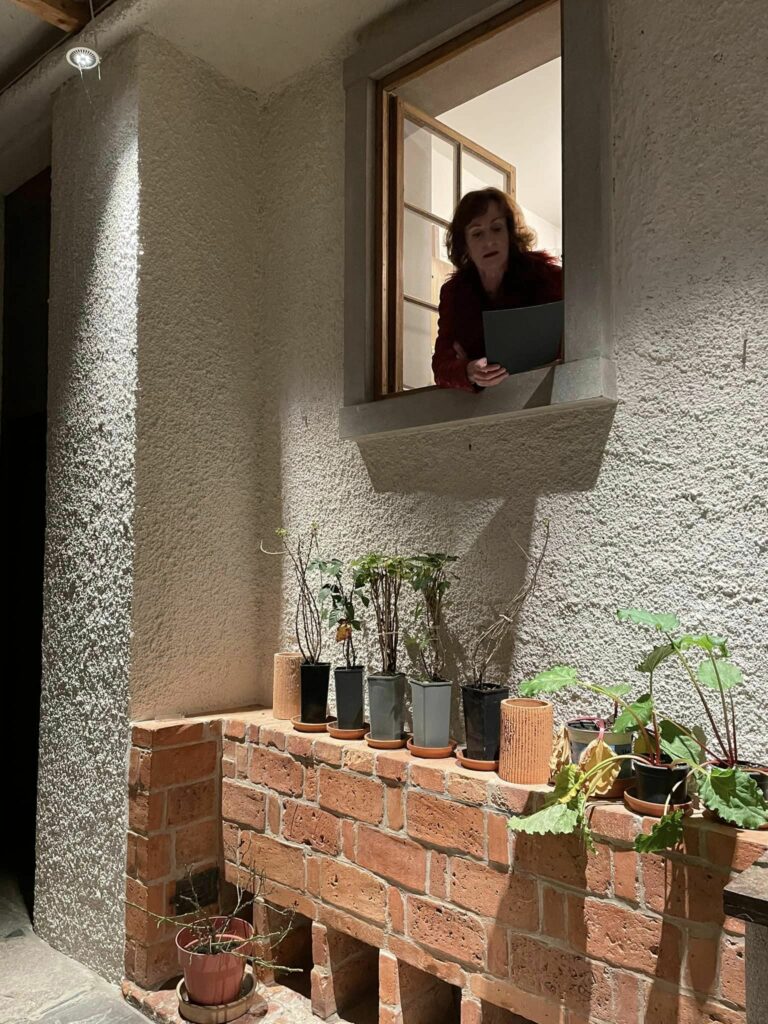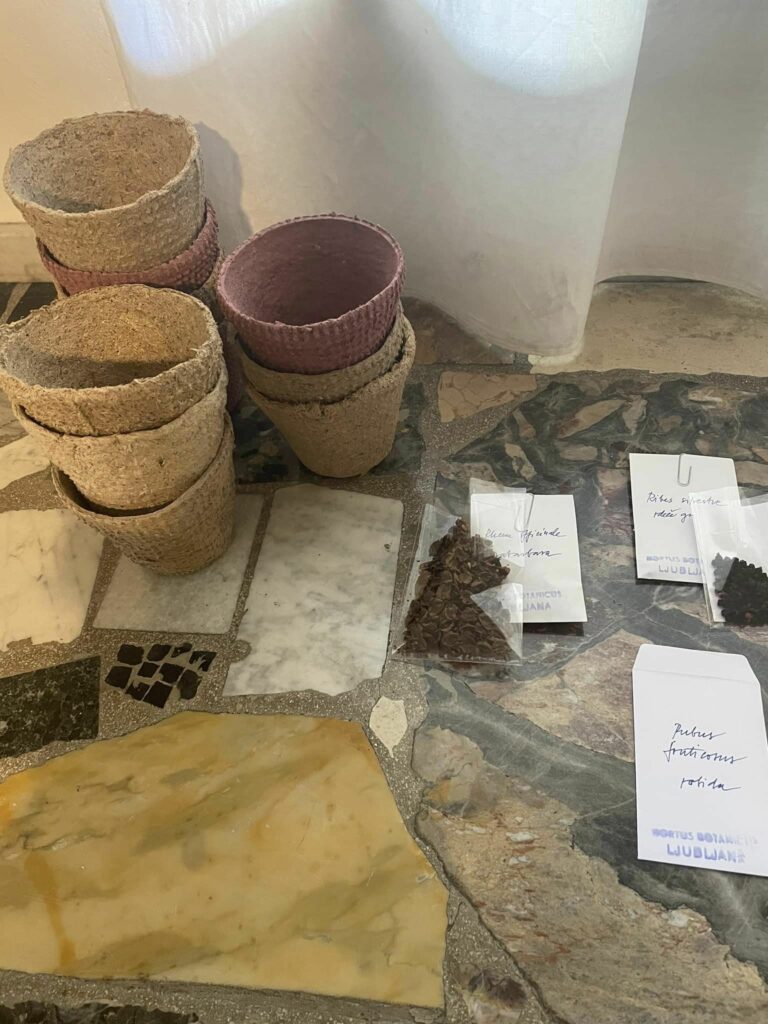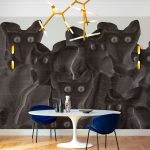Scroll down for English version
Plečnik House
by Lisa Corva
“Le case parlano? Ho sempre pensato che la casa dell’architetto mito Jože Plečnik, il genius loci di Lubiana, parlasse solo la sua lingua, quella dell’architettura e di un certo misticismo. E invece no! Già: mi sono molto divertita alla mostra curata da Luca Lo Pinto, direttore del Macro di Roma, e l’artista berlinese Olaf Nicolai, amici (anche miei) di tanti anni di storie e segreti, perché hanno disseminato la casa di storie appunto, oggetti, voci, indizi. Insieme ad artisti dal mondo. La casa è diventata una scatola magica, e la mostra sarà aperta fino al 9 gennaio 2023.”
Plečnik, un architetto mito, e i suoi segreti
La mostra si intitola “Io sono solo la governante, ma non lo so…”, e dura fino al 9 gennaio 2023. Si comincia così, con una finta lettera di un’altrettanto ipotetica governante della casa di Plečnik: in realtà una dichiarazione d’artista, quella dei due curatori, Olaf Nicolai e Luca Lo Pinto.
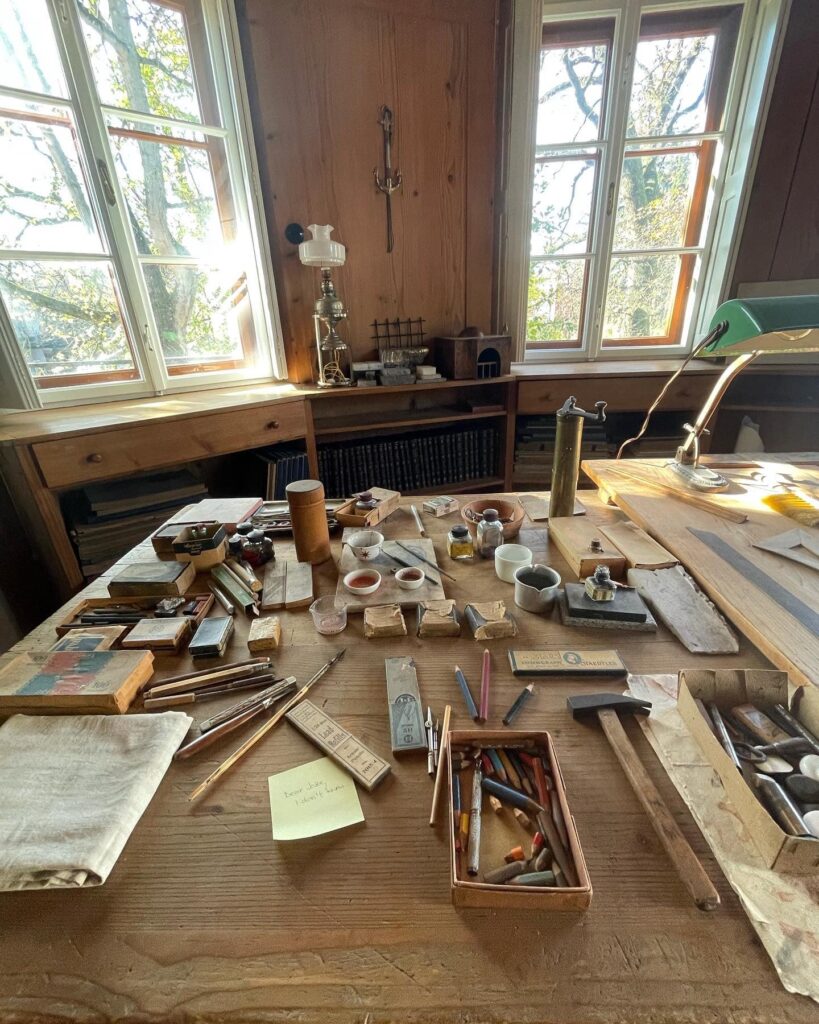
Un modo per entrare non solo nell’atelier e nella casa di Plečnik, ma nella sua vita. Già, chi era, quest’architetto dal nome quasi impronunciabile per gli stranieri? Nato a Lubiana nel 1872, morto nel 1957, le sue architetture nella capitale slovena sono state poste l’anno scorso sotto la protezione Unesco, come patrimonio dell’umanità. Fu allievo di Otto Wagner a Vienna, lavorò lì e poi a Praga, per tornare nel 1921 a Lubiana. Ed ecco i mitici Tre Ponti sul fiume, le arcate del Mercato Centrale, la chiesa di San Michele della Palude (dove mi sono sposata!), la Biblioteca Nazionale, dove lui disegnò persino le lampade. Ma era qui che Plečnik lavorava e creava, a questo tavolo rimasto intatto, con ancora le sue matite, il suo cappello. E il letto, i libri, i suoi progetti, il suo mondo.
Luca Lo Pinto, Direttore Artistico del Museo MACRO di Roma, e l’artista tedesco Olaf Nicolai, hanno pensato di disseminare la casa di oggetti e indizi. Hanno portato libri e vasi, come quello di Enzo Mari, ma hanno anche invitato artisti contemporanei a pensare degli interventi: John Armleder, Monica Bonvicini, Sophie Thun… Ci sono le installazioni sonore di Carsten Nicolai; mentre l’architetto paesaggista Ana Kučan ha scelto delle piante: già, perché nella casa di Plečnik c’è anche un giardino e persino un’arnia per le api, che ora contiene la voce l’attrice Saša Pavček. In tutto 25 nomi che dialogano, appunto, con la casa.
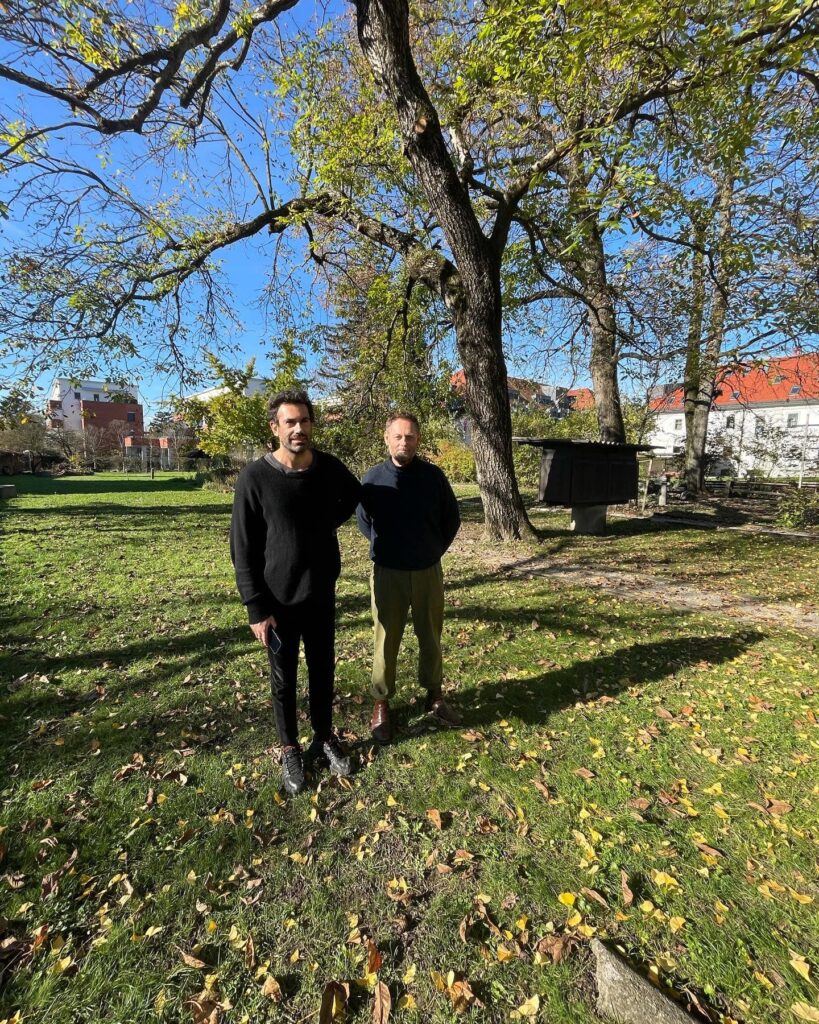
Luca Lo Pinto e Olaf Nicolai.
Ma cosa vuol dire far parlare una casa-museo? Lascio la parola a Luca Lo Pinto: “Mi appassionano da sempre. E negli anni a Roma sono riuscito ad “aprirle” per mostre con artisti contemporanei. L’ho fatto a casa del grande storico dell’arte Mario Praz nel 2006; nella casa e studio dove visse De Chirico a Piazza di Spagna, nel 2012… “, sempre coinvolgendo Olaf Nicolai, tra l’altro. “Sono luoghi per me affascinanti perché sono delle “time capsule”: i dipinti, i libri, i mobili, ti raccontano un tempo che è rimasto sospeso. Nessuna di queste case museo aveva ospitato in precedenza delle mostre di arte contemporanea. In tal senso è stata una sfida entrarci e cercare di “amplificarne” il senso, stabilendo un dialogo col presente. E’ stato anche un modo per crearmi un museo ideale e unico dove lavorare”.
Olaf Nicolai, artista berlinese ma internazionale (forse l’avete visto alla Biennale di Venezia nel 2001, 2005 e 2015), e Luca Lo Pinto sono amici e hanno lavorato insieme spesso: ad esempio, per la grande mostra a Vienna di Olaf nel 2018, “There Is No Place Before Arrival”. Plečnik e Lubiana sono una passione comune, e Olaf Nicolai, che è un goloso, è riuscito a convincere anche la chef stellata Ana Roš a comporre delle ricette con quello che si trovava nell’orto dell’architetto. Ma le ricette vengono recitate: un piccolo divertissement d’artista anche questo.
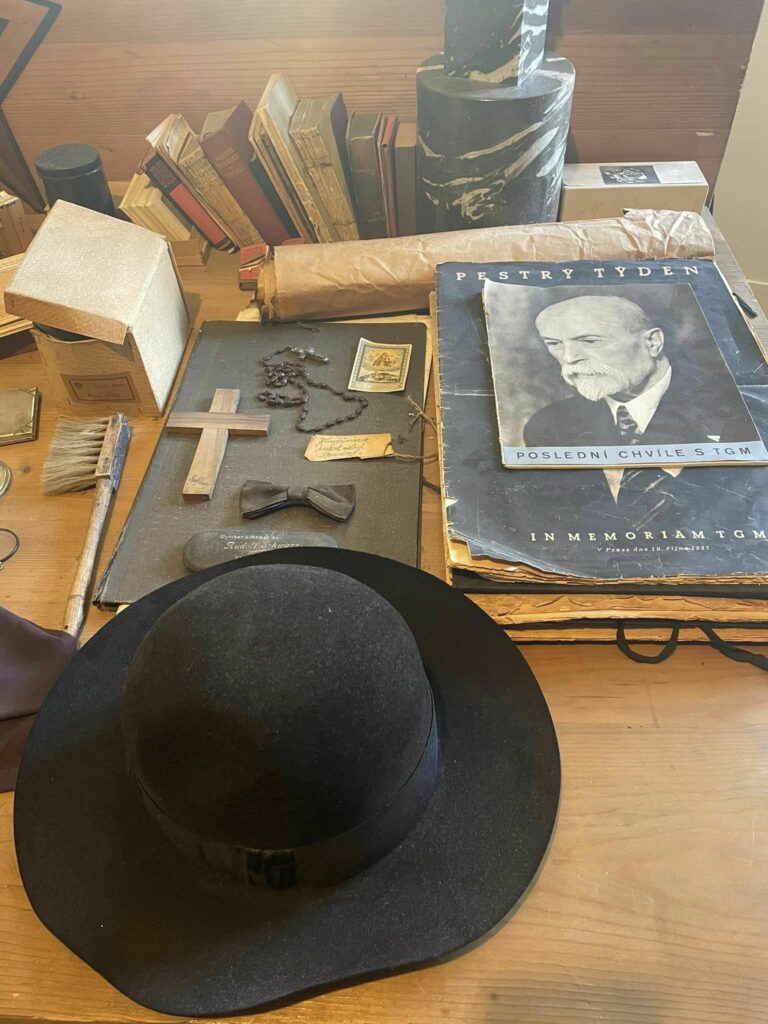
“A farci visita alla Plečnik House sono il curatore italiano Luca Lo Pinto e l’artista tedesco Olaf Nicolai. Insieme agli artisti da loro invitati, hanno realizzato piccole opere contemporanee interventi in casa, che raccontano l’opera di Plečnik e il suo mondo del pensiero con sorprendente freschezza.
Lo scopo dei loro meticolosi interventi è di aprire le dimensioni e le posizioni della casa di Plečnik in un modo completamente diverso da quello a cui siamo abituati…
Una rete di storie, oggetti e connessioni mentali, che non notiamo immediatamente perché abbiamo bisogno della virtù della pazienza e dell’orecchio del narratore, quindi vogliamo attualizzare l’eredità di Plečnik e collegarla con il tempo e lo spazio di oggi.”
– Blaž Peršin, direttore del Museo e delle Gallerie di Lubiana
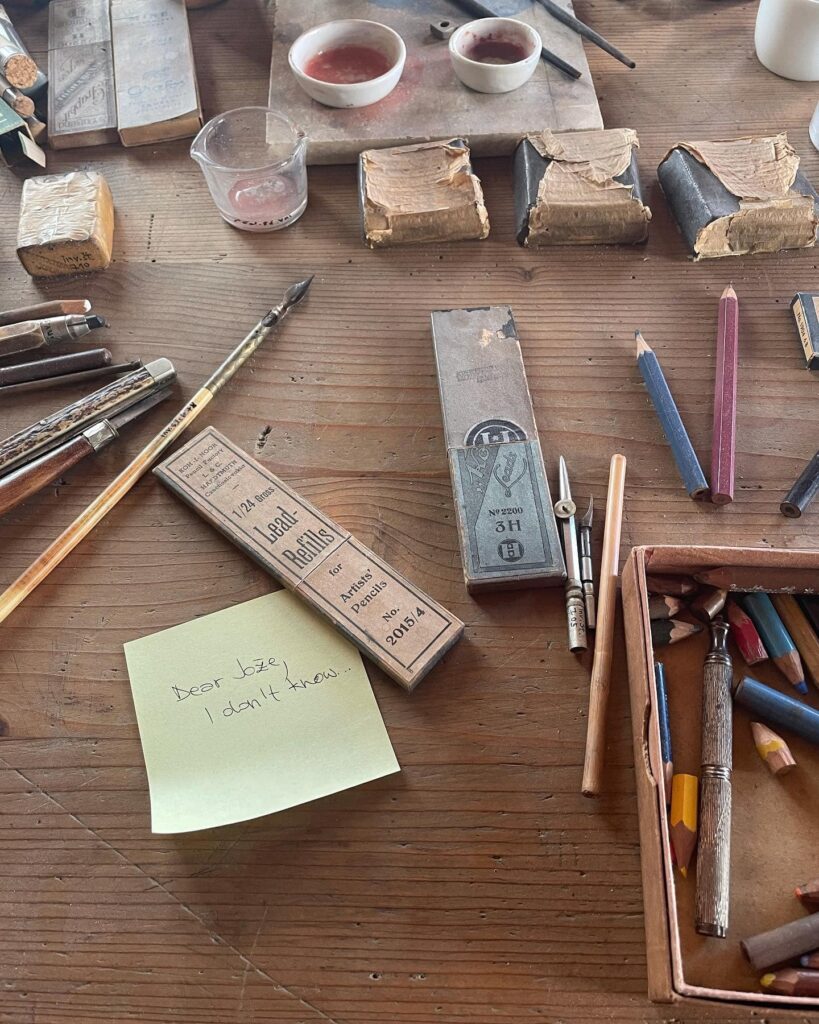
I curatori hanno basato il concept espositivo su una lettera (fittizzia) che la governante Urška scrisse a Plečnik:
Caro Jože,
Oggi ho incontrato due uomini che sono venuti a trovarti a casa. Hanno trascorso molto tempo qui e hanno adorato il tuo posto. Chiesero se fosse possibile inserire nella casa dei piccoli oggetti, che unissero le vostre cose per un po’ e facessero loro compagnia. Dicevano qualcosa del tipo: “Le cose possono parlare con le cose”, cosa che pensavo fosse strana, ma anche abbastanza commovente. Ho detto loro subito che probabilmente non ti sarebbe piaciuto. Non potevo immaginare che tu lo approvassi.
Ma poi non smettevano di parlare di te e della casa. Durante la conversazione, quando avevo preparato loro del tè, improvvisamente mi hanno chiesto di condividere cose che ti avrei suggerito. Solo piccoli, possibili cambiamenti e pensieri che potrei aver avuto, e cercherebbero di trovare modi in cui queste idee, desideri e gesti potrebbero essere presentati a te.
All’inizio ho pensato: “Oh, no!” Mi sono ricordata cosa è successo quella volta con il gabinetto! Non potevo impedire al consiglio comunale di installare un gabinetto con sciacquone in tua assenza. Pensavano che ti avrebbe fatto piacere. Non dimenticherò mai il tuo drastico commento: “Voglio sentire come cade la merda”. Sì, hai detto “merda!” e poi tutto doveva essere rimosso. No, dopo quella prova ho giurato a me stessa che non l’avrei mai più permesso! Non voglio mai più sentire quelle parole.
Eppure, dopo questa conversazione, ho cominciato a pensare. Perché non dovremmo apportare alcune modifiche? Potrebbe rivelarsi una buona idea e ho davvero iniziato a pensarci. Sai, ho sempre mantenuto un profilo basso e ho cercato di occuparmi della casa in modo discreto, di aderire ai tuoi desideri e di assicurarmi che tutto fosse al suo posto, in modo che tu potessi svolgere il tuo lavoro in pace. Tuttavia, ammetto che diverse idee mi sono passate per la mente. A volte pensavo alla possibilità di cambiare questo o quello in casa e in giardino. Non parlo di grandi cambiamenti o ristrutturazioni… Solo piccole cose, segni, gesti. Forse, anche solo suggerimenti.
Sono tornati il giorno seguente e abbiamo deciso di continuare la conversazione e condividere i nostri pensieri. Quindi, devo ammettere che abbiamo iniziato a collaborare. Scoprirai che la tua casa è cambiata un po’ adesso. Ascolterai anche alcune storie. Per favore, non aver paura. Forse lo vedrai come me: un punto di partenza. Per quello che ancora non sappiamo, né sappiamo dove ci porterà… Chi lo vedrà, capirà, si spera, che le cose possono essere in un certo modo, e che possono anche essere diverse. Immagina se le campane del campanile della chiesa accanto non suonassero solo ogni ora in punto, ma anche nove minuti dopo mezzogiorno.
Urška
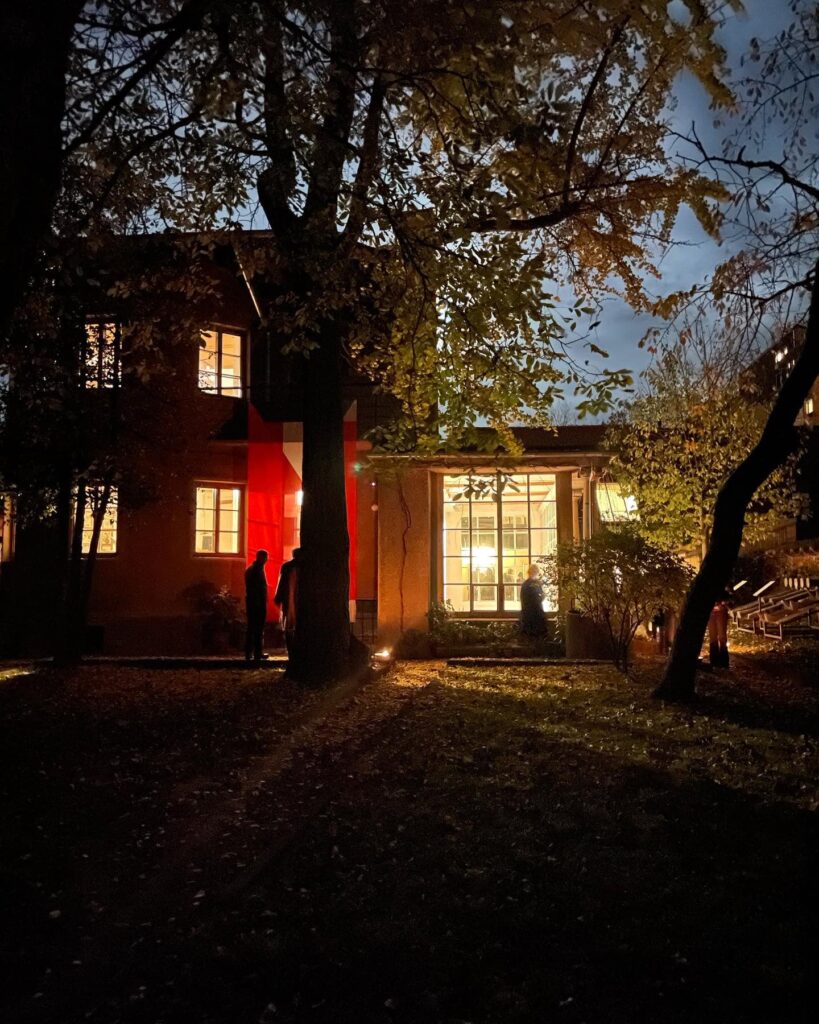
La casa museo è sempre visitabile, e chissà, magari racconterà altre storie quando ci entrerete.

“Do houses speak? I’ve always thought that the house of the legendary architect Jože Plečnik, the genius loci of Ljubljana, spoke only his language, that of architecture and a certain mysticism. But no! Yeah: I really enjoyed the exhibition curated by Luca Lo Pinto, director of Macro in Rome, and the Berlin artist Olaf Nicolai, friends (including mine) of many years of stories and secrets, because they have they have scattered stories, objects, voices, clues in the house. Together with artists from around the world. The house has become a magic box, and the exhibition will be open until January 9, 2023.”
Plečnik, a legendary architect, and his secrets
The exhibition is entitled “I AM ONLY THE HOUSEKEEPER, BUT I DON’T KNOW…”, and continues until January 9, 2023. This is how it begins, with a fake letter from an equally hypothetical housekeeper of Plečnik’s house: in reality an artist statement, that of the two curators, Olaf Nicolai and Luca Lo Pinto.
A way to enter not only Plečnik’s atelier and home, but his life. Yeah, who was he, this architect with an almost unpronounceable name for foreigners? Born in Ljubljana in 1872, died in 1957, his architecture in the Slovenian capital was placed under UNESCO protection last year, as a World Heritage Site. He was a pupil of Otto Wagner in Vienna, worked there and then in Praguereturning in 1921 to Ljubljana. And here are the legendary Three Bridges over the river, the arches of the Central Market, the church of San Michele della Palude (where I got married!), the National Library, where he even designed the lamps. But it was here that Plečnik worked and created, at this table that remained intact, with his pencils still, his hat. And the bed, the books, his projects, his world.
Luca Lo Pinto, Artistic Director of the MACRO Museum in Rome, and the German artist Olaf Nicolai, have decided to disseminate the house with objects and clues. They brought books and vases, like the one by Enzo Mari, but they also invited contemporary artists to think about the interventions: John Armleder, Monica Bonvicini, Sophie Thun… There are sound installations by Carsten Nicolai; while the landscape architect Ana Kučan chose plants: yes, because in Plečnik’s house there is also a garden and even a beehive, which now contains the voice of the actress Saša Pavček. A total of 25 names that are in dialogue precisely with the house.
But what does it mean to make a house-museum talk? I leave the floor to Luca Lo Pinto: “They have always fascinated me. And over the years in Rome I have managed to “open” them for exhibitions with contemporary artists. I did it at the home of the great art historian Mario Praz in 2006; in the house and studio where De Chirico lived in Piazza di Spagna, in 2012… “, always involving Olaf Nicolai, among other things. “They are fascinating places for me because they are “time capsules”: the paintings, the books, the furniture tell you about a time that has remained suspended. None of these museum houses had previously hosted exhibitions of contemporary art. In this sense, it was a challenge to enter it and try to “amplify” its meaning, establishing a dialogue with the present. It was also a way to create for myself an ideal and unique museum to work in”.
Olaf Nicolai, a Berlin yet international artist (maybe you saw him at the Venice Biennale in 2001, 2005 and 2015), and Luca Lo Pinto are friends and have worked together often: for example, for Olaf’s major exhibition in Vienna in 2018, “There Is No Place Before Arrival”. Plečnik and Ljubljana share a common passion, and Olaf Nicolai, who has a sweet tooth, managed to convince even the Michelin starred chef Ana Roš to create recipes with what was found in the architect’s garden. But the recipes are recited: this too is a small artist’s divertissement.
Blaž Peršin, the director of the Museum and Galleries of Ljubljana, thus highlighted:
“Paying us a visit at the Plečnik House are the Italian curator Luca Lo Pinto and the German artist Olaf Nicolai. Together with the artists they invited, they made small contemporary interventions in the house, which speak of Plečnik’s work and his world of thought with surprising freshness. The purpose of their meticulous interventions is to open the dimensions and locations of Plečnik’s home in a completely different way from what we are accustomed to. They have woven a web of stories, objects, and mental connections, which we fail to notice immediately as we need the virtue of patience and the ear of the storyteller. Thus, we want to actualise Plečnik’s heritage and connect it with the time and space of today.”
The curators based the exhibition concept on a (fictitious) letter
that the housekeeper Urška wrote to Plečnik:
Dear Jože,
Today I met with two men who visited your house. They spent a lot of time here and loved your place. They asked if it would be possible to add some small objects to your house, which would join your things for a little while and keep them company. They said something like, “Things could talk to things”, which I thought was odd, but also quite touching.
I told them right away that you probably would not have liked that. I just could not imagine you approving of it.
But then they would not stop talking about you and the house. During the conversation, when I had made them some tea, they suddenly asked me to share things I would have suggested to you.
Just small, possible changes and thoughts I may have had, and they would try to come up with ways in which these ideas, wishes, and gestures could be presented to you.
At first I just thought, “Oh, no!”
I remembered what happened that one time with the toilet! I couldn’t stop the city council from installing a flush toilet in your absence. They assumed it would have pleased you.
I will never forget your drastic comment, “I want to hear how shit falls.” Yes, you said, “shit!” and then everything had to be removed.
No, after that ordeal I swore to myself that I would never let it happen again! I never want to hear those words ever again.
Yet, after this conversation, I began to think. Why shouldn’t we make some changes? It could prove to be a good idea, and I really started to give it some thought.
You know, I have always kept a low profile and tried to unobtrusively look after the house, adhere to your wishes, and make sure that everything was in its place, so that you could go about your work in peace.
Nonetheless, I admit that several ideas have crossed my mind. At times I thought about the possibility of changing this or that in the house and around the garden. I am not talking about big changes or renovations… Just small things, signs, gestures. Perhaps, even just suggestions.
They came back the following day, and we decided to keep the conversation going and share our thoughts. So, I have to admit that we did start to collaborate.
You will find your house has changed a little bit now. You will also hear some stories. Please, do not be afraid or grumpy. Maybe you will see it as I do: a starting point. For what we do not yet know, nor do we know where it will lead us to…
Those who will see it will hopefully understand that things can be a certain way, and that they can also be different.
Imagine if the bells in the church tower next door did not only ring every hour on the dot, but also nine minutes past noon.
Urška
The house museum can always be visited, and who knows, maybe it will tell other stories when you enter it.

